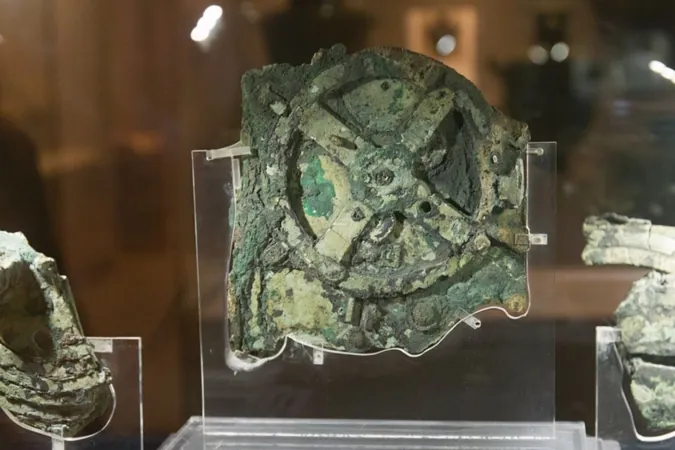
Was the Antikythera Mechanism Just a High-Tech Paperweight? New Research Raises Doubts
2025-04-11
Author: Ming
In 1901, sponge divers stumbled upon a sunken treasure off the coast of the Greek island of Antikythera, unearthing an ancient shipwreck brimming with relics. Among these was a peculiar corroded mass that captivated archaeologist Valerios Stais. What was later named the Antikythera Mechanism has since been hailed as the world’s first analog computer, ingeniously designed to track celestial events through a series of gears and indicators.
However, fresh research adds a shocking twist to this legendary artifact. New simulations suggest that the Antikythera Mechanism might have been nothing more than a beautifully crafted ornament rather than a functional device. Researchers assert that the gear's triangular teeth were not the primary issue; instead, the true culprit was likely subpar gear construction. Even minute errors in manufacturing could have caused the device to malfunction, leading to speculation whether it was ever operational or if it was created with a precision lost in time.
Scholars have long debated the true functionality of this enigmatic device, questioning if it was simply a glorified trinket or a groundbreaking ancient technology. Argentine engineers Esteban Guillermo Szigety and Gustavo Francisco Arenas from the National University of Mar del Plata have taken a novel approach, merging previous findings on the triangular gears and manufacturing defects to reassess the mechanism’s reliability. Their findings, shared on April 1 via the preprint server arXiv, are stirring up the academic waters yet again.
The Antikythera Mechanism featured an intricate network of indicators functioning like clock hands, which showcased the positions of celestial bodies, predicted eclipses, and tracked time according to both the Egyptian and Greek lunisolar calendars. However, the study points out two major sources of error in its design: the triangular tooth shape induced erratic motion, while inaccuracies in gear production could lead to malfunction.
To uncover the impacts of these design flaws, Szigety and Arenas constructed a computer model that integrated previous measurements from researchers Alan Thorndike and Mike Edmunds, who examined the triangular tooth problem and manufacturing inaccuracies, respectively.
Their findings revealed a startling conclusion: while the triangular teeth produced minimal errors, the manufacturing flaws significantly raised the chances of the gears jamming or becoming disengaged. This raises serious questions: could it be that the Antikythera Mechanism was entirely nonfunctional, or were its errors merely less severe than previously believed?
Although the researchers acknowledge the possibility that someone could intentionally create a device that didn’t work, they lean towards the idea that previous assessments might have been skewed due to the artifact’s extensive corrosion. Still, they caution that their results should be approached with care, given the speculative nature of the research.
This study adds fuel to the ongoing debate about the Antikythera Mechanism, pushing the conversation forward. As researchers continue to delve into the remnants of this ancient marvel, each new analysis reveals tantalizing clues, serving as a reminder of the extraordinary precision its creators needed to achieve.





 Brasil (PT)
Brasil (PT)
 Canada (EN)
Canada (EN)
 Chile (ES)
Chile (ES)
 Česko (CS)
Česko (CS)
 대한민국 (KO)
대한민국 (KO)
 España (ES)
España (ES)
 France (FR)
France (FR)
 Hong Kong (EN)
Hong Kong (EN)
 Italia (IT)
Italia (IT)
 日本 (JA)
日本 (JA)
 Magyarország (HU)
Magyarország (HU)
 Norge (NO)
Norge (NO)
 Polska (PL)
Polska (PL)
 Schweiz (DE)
Schweiz (DE)
 Singapore (EN)
Singapore (EN)
 Sverige (SV)
Sverige (SV)
 Suomi (FI)
Suomi (FI)
 Türkiye (TR)
Türkiye (TR)
 الإمارات العربية المتحدة (AR)
الإمارات العربية المتحدة (AR)